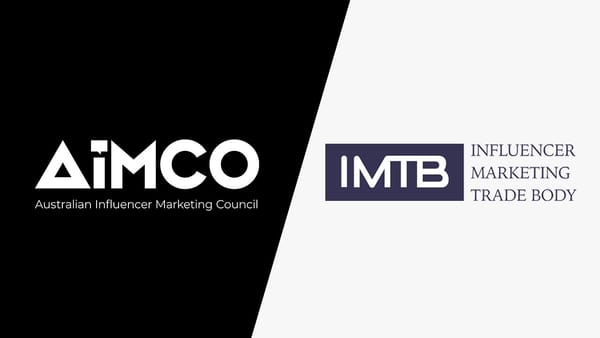Our Creator Compass series is taking us far away from Europe and across oceans, landing in Japan.
Influencer marketing in Japan presents its own unique set of challenges and opportunities. To understand the intricacies of the market, brands need to grasp the cultural values, legal regulations, and social dynamics that shape influencer campaigns in Japan. Kohei Nagao, an expert in the Japanese influencer marketing landscape, shed light on these key factors and offered insights on how brands can navigate the ecosystem.
The Japanese national character and its impact on expression
One of Japan's biggest challenges in influencer marketing lies in the country’s deep-rooted cultural values. “Influencers are expected not to stand out too much or disturb social harmony, and as a result, their content often gravitates toward safe, neutral expressions,” said Nagao.
Rather than directly stating opinions or making calls to action, content tends to be more subtle and nuanced. Direct calls to action like “Buy this now” are therefore less effective, and “sometimes even off-putting,” according to Nagao.
This cultural trait of social conformity can govern influencer behaviour. While this approach reduces the risk of public backlash, it also stifles bold opinions or creative messaging. According to Nagao, “Brand campaigns, particularly those that are designed with Western-style assertiveness, can sometimes feel too aggressive or off-putting to Japanese audiences.”
“Instead, phrases like ‘a lot of people seem interested in this’ or ‘I’ve noticed it getting popular lately’ are more likely to resonate. In influencer marketing, crafting copy that invites realisation or evokes shared sentiment is often more successful than explicit commands.”
Not only does this cultural factor affect buyers, but marketers too. Marketers must “carefully assess” whether an influencer is socially intuitive and whether they have a track record of avoiding inflammatory or controversial content. “These factors are often prioritised above sheer follower count,” Nagao explained.
Risk aversion and the culture of shame
Another significant factor is Japan's "culture of shame," which contributes to heightened risk aversion, particularly in consumer purchasing behaviour. “Consumers commonly worry about making a bad choice and being judged by others,” Nagao noted. “This makes them heavily reliant on third-party reviews, peer recommendations, and social proof before making decisions.”
Influencers who acknowledge and empathise with these concerns, such as using phrases like “I was nervous about this at first, too,” are more likely to succeed in reducing the emotional barriers to purchase. As Nagao said, “Content that acknowledges vulnerability, rather than aggressively pushing a product, resonates far more effectively in Japan.”
Japanese consumers also place a high value on group belonging, and this extends to their social media behaviour. “Statements like ‘This product went viral’ or ‘Everyone’s using it’ carry significant persuasive power,” Nagao explained. “In Japan, it’s not just about individual endorsements. Brands need to craft campaigns that simulate mass adoption and collective popularity.”
Legal and structural barriers
Strict regulations on product claims
Japan has some of the strictest marketing regulations in the world, particularly in the pharmaceutical and cosmetics sectors. “Japan’s Pharmaceutical Law is among the strictest globally and heavily governs the way products, especially cosmetics, supplements, and personal care items, can be promoted,” said Nagao. “Claims that a product can ‘improve skin’ or offer guaranteed results are strictly prohibited.”
He continued, “Overseas clients are often shocked by these restrictions, frequently asking, ‘Then how are we supposed to explain the benefits at all?’” Violating these laws can result in huge penalties, including public listings on the Ministry of Health’s official website, which can severely damage a brand’s reputation. As Nagao put it, “In Japan, a single public backlash or regulatory violation can cause long-term harm.”
Content usage rights and negotiations
In Japan, influencers are highly protective of their content and are reluctant to allow repurposing without clear agreements. “Repurposing photos or videos for advertisements or even using them beyond the original post often incurs additional fees. Influencers frequently decline to approve usage unless every detail, including how, where, and for how long the content will be used, is clarified upfront.” This strict approach to content usage can slow down campaign execution and increase costs.
Language and communication barriers
Communication with Japanese influencers also presents a challenge for overseas brands. “Most Japanese influencers don’t speak or read English,” Nagao said. “In fact, about 95% of Japanese influencers simply disregard messages written in English. Even when messages are written in Japanese, poorly translated or unnatural phrasing immediately triggers scepticism.
“This isn’t just about linguistic nuance, it's a direct consequence of past incidents, where overseas actors attempted scams targeting Japanese influencers using suspicious Japanese or foreign messages,” Nagao warned.
To avoid these issues, he stressed the importance of “fluent, culturally appropriate Japanese” when reaching out to influencers. “Successful communication requires fluent, culturally appropriate Japanese handled by local professionals familiar with not just the language, but Japan’s business etiquette and influencer ecosystem.”
Content trends
Alignment with cultural sensibilities
Successful influencer marketing content in Japan aligns with key cultural values such as empathy, indirectness, and group validation. “Japanese audiences prefer stories that acknowledge vulnerability or uncertainty,” said Nagao. “This means tone and delivery matter just as much as the product being introduced.”
Adapting to fast-moving format trends
Japan’s social media landscape is fast-moving, with content formats changing rapidly. “Creators and brands must stay ahead of the curve,” Nagao advised. “One past example involved a boom in Q&A formats, where influencers answered questions from followers. During that period, such campaign posts generated up to 200% more impressions than standard campaign posts.” Keeping pace with shifting trends is crucial for success.
The rise of short-form drama
One of the most exciting trends in Japan is the rise of short-form narrative videos, or "mini dramas." These 15 to 60-second videos feature influencers acting out relatable scenarios, often romantic or comedic, in which the product is integrated naturally into the storyline. “Several major brands in Japan have already launched dedicated short-drama accounts, treating them as long-term campaign platforms rather than one-off gimmicks. This storytelling approach minimises ad fatigue and strengthens emotional engagement,” Nagao explained.
Getting paid
In Japan, flat-fee arrangements are far more popular than affiliate compensation. “Most Japanese influencers strongly prefer flat-fee compensation,” Nagao pressed. “Affiliate-based compensation is often viewed with distrust and reluctance. The idea of ‘getting paid only if it sells’ feels unstable and even exploitative to many creators, who place high value on predictable income.” While affiliate links may work for high-demand, high-recognition products, the preference is always for flat fees.
The challenge of overlapping agencies
In Japan, very few brands have in-house teams or personnel dedicated to influencer marketing. As a result, most campaigns are outsourced to advertising agencies, which in turn rely on subcontractors or third parties.
Nagao laid out the structure as so:
Brand→ Lead Agency→ Sub-Agency→Sub-Sub-Agency→ Talent Agency→ Influencer
However, the structure continues to cause problems:
・Cost Inflation: Multiple layers mean multiple commissions, dramatically increasing the final cost.
・Message Distortion: With each handoff, brand intent is diluted or miscommunicated.
・Execution Delays: Longer decision chains slow down activation and responsiveness.
To combat this, Nagao encouraged agencies to collaborate directly with influencers whenever possible, including his own. “By minimising intermediaries, we streamline communication, reduce costs, and deliver faster, more effective results.”
Fun and innovative campaign examples
Nagao shared some notable campaigns that he worked on, which included a major Japanese football influencer visiting a Premier League football club in the UK.
“The influencer shared this experience in real-time through social media posts and vlogs, allowing Japanese fans to vicariously experience the event. The authenticity and relatability of the influencer’s voice added tremendous value, helping build goodwill and a cultural connection between the club and Japanese fans,” he said.
Another memorable campaign featured a Korean cosmetics brand collaborating with a popular Japanese beauty YouTuber to co-develop a limited-edition product. “The campaign combined content, storytelling, influencer authenticity, and e-commerce,” Nagao recalls. “The campaign combined content, storytelling, influencer authenticity, and e-commerce. All 500 boxes sold out immediately, and other products also saw a 150% increase in sales during the campaign."
Key takeaways
Japan’s influencer marketing presents significant opportunities, but it also requires a nuanced approach. “Brands must understand the cultural sensitivities and legal frameworks that shape the market,” Nagao concluded. “By aligning with local values, staying flexible with trends, and working directly with influencers, brands can build strong, lasting connections with Japanese consumers.”
If you’re looking for a reliable partner in Japan, consider reaching out to Kohei Nagao on LinkedIn.








